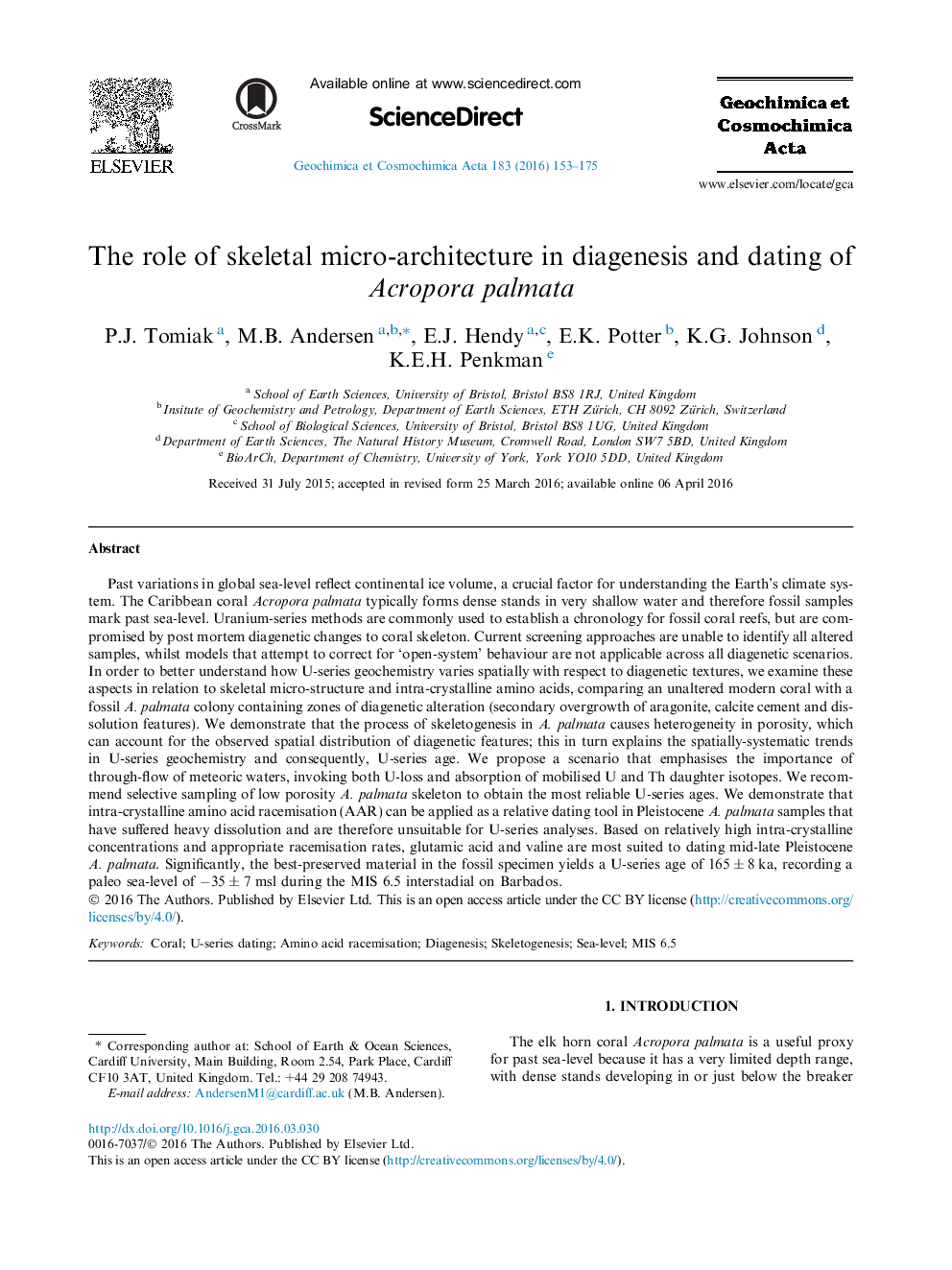| کد مقاله | کد نشریه | سال انتشار | مقاله انگلیسی | نسخه تمام متن |
|---|---|---|---|---|
| 6437222 | 1637974 | 2016 | 23 صفحه PDF | دانلود رایگان |

Past variations in global sea-level reflect continental ice volume, a crucial factor for understanding the Earth's climate system. The Caribbean coral Acropora palmata typically forms dense stands in very shallow water and therefore fossil samples mark past sea-level. Uranium-series methods are commonly used to establish a chronology for fossil coral reefs, but are compromised by post mortem diagenetic changes to coral skeleton. Current screening approaches are unable to identify all altered samples, whilst models that attempt to correct for 'open-system' behaviour are not applicable across all diagenetic scenarios. In order to better understand how U-series geochemistry varies spatially with respect to diagenetic textures, we examine these aspects in relation to skeletal micro-structure and intra-crystalline amino acids, comparing an unaltered modern coral with a fossil A. palmata colony containing zones of diagenetic alteration (secondary overgrowth of aragonite, calcite cement and dissolution features). We demonstrate that the process of skeletogenesis in A. palmata causes heterogeneity in porosity, which can account for the observed spatial distribution of diagenetic features; this in turn explains the spatially-systematic trends in U-series geochemistry and consequently, U-series age. We propose a scenario that emphasises the importance of through-flow of meteoric waters, invoking both U-loss and absorption of mobilised U and Th daughter isotopes. We recommend selective sampling of low porosity A. palmata skeleton to obtain the most reliable U-series ages. We demonstrate that intra-crystalline amino acid racemisation (AAR) can be applied as a relative dating tool in Pleistocene A. palmata samples that have suffered heavy dissolution and are therefore unsuitable for U-series analyses. Based on relatively high intra-crystalline concentrations and appropriate racemisation rates, glutamic acid and valine are most suited to dating mid-late Pleistocene A. palmata. Significantly, the best-preserved material in the fossil specimen yields a U-series age of 165 ± 8 ka, recording a paleo sea-level of â35 ± 7 msl during the MIS 6.5 interstadial on Barbados.
Journal: Geochimica et Cosmochimica Acta - Volume 183, 15 June 2016, Pages 153-175